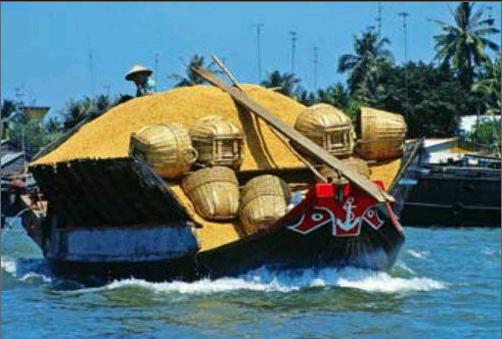The New Silk Roads:Challenges Mean Opportunities
2015-03-16byQuXing
by+Qu+Xing


New Globalization
In 2013, Chinese President Xi Jinping first proposed the Silk Road Economic Belt Initiative during his visit to Kazakhstan. The economic belt refers to the region comprised of countries along the ancient Silk Road, which will not only serve as a channel linking the East and the West as the ancient Silk Road did, but also promote common development of countries along the Road.
In the context of globalization, the economic belt injects new connotations into the ancient Silk Road. As a passage linking East Asia and Europe, the ancient Silk Road merely passed through countries along it. However, the Silk Road Economic Belt Initiative will provide much more than just passage.
The initiatives of the Silk Road Economic Belt and the 21stCentury Maritime Silk Road, namely the Belt and the Road, aim to strengthen infrastructure interconnection between China, Europe, Oceania, America, and Africa against the backdrop of globalization and form a complete infrastructure chain to facilitate logistics and personnel exchange amongst Asia, Europe and Africa, espe- cially cooperation between Asia and Europe.
Infrastructure interconnection involves navigation marks, ports, and railways connecting to harbors. For instance, if a railroad is constructed to link Chinas mainland to Singapore as part of the Pan-Asia Railway, products from countries along the rail will be directly transported to harbors. To reach the goal, parties involved are required to carry out cooperation in infrastructure interconnection in terms of railways, ports, and highways.
Jointly maintaining maritime stability is something new. In the past, merchant ships cruising along the ancient Maritime Silk Road were often attacked by pirates, and it was hard for countries to launch joint counteroffensives due to the lack of a cooperative mechanism. Apart from storms, pirate attacks were also a primary reason for shipwrecks in ancient times.
In the context of economic globalization, all countries are closely interconnected and share common opportunities and risks. It is difficult for a country to prosper by itself. All countries must seek mutual benefits and win-win cooperation. This is the essential characteristic of the 21st Century and the ultimate purpose of the Belt and Road Initiatives.
Although they both emphasize economic and social development, the Belt and Road Initiatives and the “New Silk Road”concept announced by the United States two years ago differ from each other. The “New Silk Road” concept involves a north-tosouth economic belt with Afghanistan, Pakistan and India as the axle, with which the United States aims to help stabilize Afghanistan. The Belt and Road Initiatives are not intended to help stop wars. Rather, they are just long-term plans to promote economic and social development in the region.
The concept of infrastructure interconnection reflects the trend of global development. In fact, the concept has already become reality in some regions. For instance, transnational oil pipelines linking Russia and Europe, Russia and China, and Central Asia and China are now in use.
Essentially, global imbalances can be attributed to imbalanced development of different countries. Therefore, infrastructure interconnection meets the essential interests of all parties. Conflicts between countries will decrease as their development gaps shrink.
Opportunities over Challenges
For historical reasons, political trust between relevant countries remains far from ideal. The Silk Road Economic Belt passes through the region previously controlled by the former Soviet Union. Russia still keeps a close eye on the area and proposed to launch the Eurasian Union. The 21st-Century Maritime Silk Road covers areas involved in territorial disputes between China and Vietnam and the Philippines on some islands and exclusive economic zones. These issues bring uncertainties and challenges for the realization of the Belt and Road Initiatives.
Presently, the world situation has changed, and we need not shirk any challenge. In fact, the Silk Road Economic Belt Initiative is very similar to Russias “Eurasian Union” proposal and partially overlaps the United States “New Silk Road” concept. Every disagreement and challenge can be solved within this framework.
China has joined hands with Southeast Asian countries including Vietnam and Brunei to launch cooperation within the framework of the 21st-Century Maritime Silk Road Initiative. Despite persisting border disputes, China and India have maintained a stable relationship for many years. Both sides have reached understandings to maintain stability in the region along the Line of Actual Control, built mutual trust in military realms and adhered to the basic principles to move towards the ultimate settlement of border disputes.
China aims to solve problems through promoting common development. For this reason, opportunities considerably outweigh challenges in the future.
Diverse cultures coexist along the Belt and the Road. However, China doesnt consider cultural diversity a challenge. The country has long practiced regional ethnic autonomy, which enables different ethnic groups to live harmoniously in the same country while preserving their own ethnic cultures and religious traditions. The Belt and Road Initiatives reflect the inclusiveness of Chinese civilization.